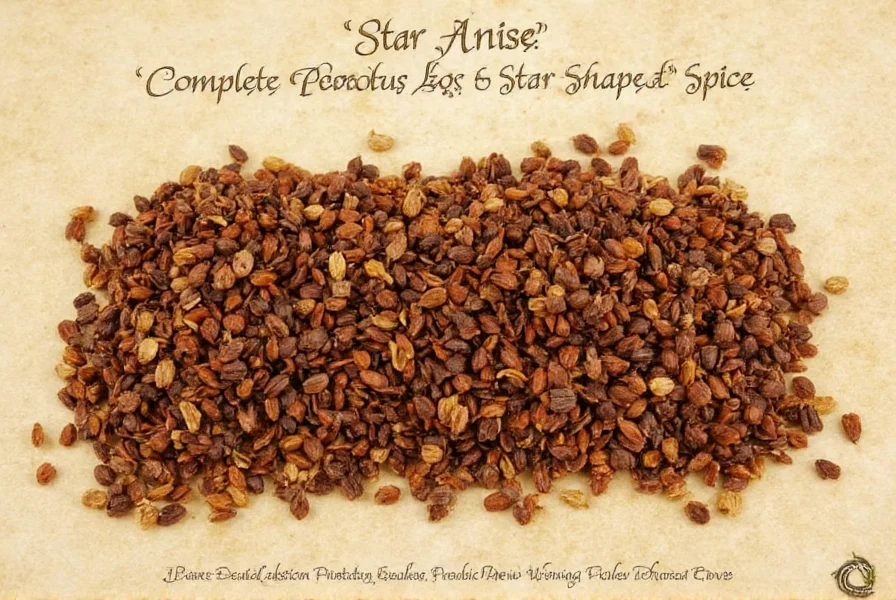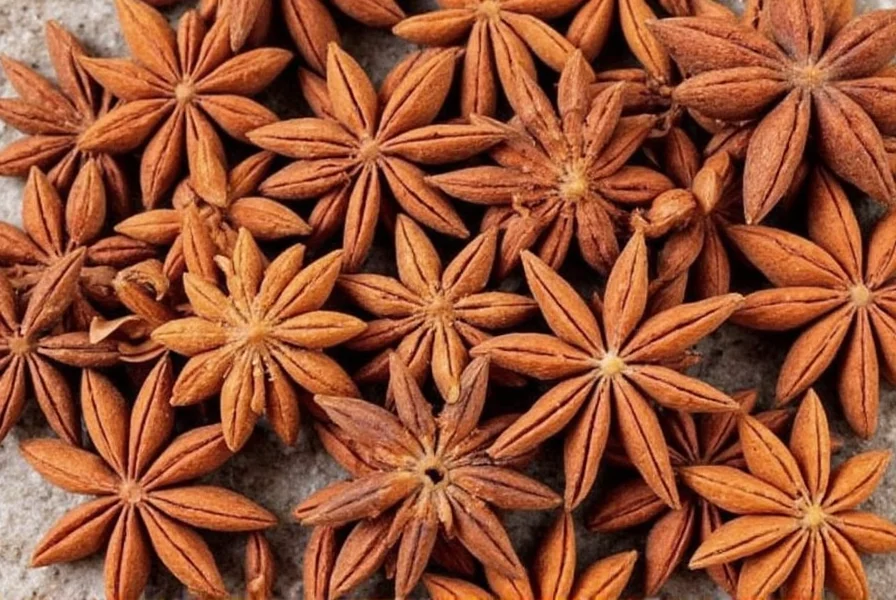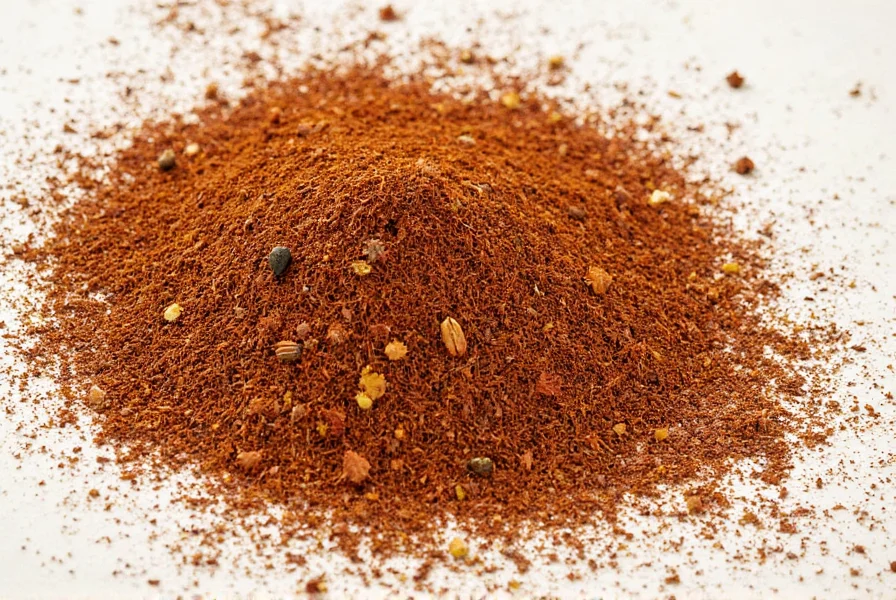Often confused due to its name, star anise is not related to anise seed but shares similar flavor compounds. This unique spice has been used for centuries in Chinese cooking and traditional medicine practices. The distinctive eight-pointed star shape—though sometimes having seven to ten points—contains seeds that deliver intense flavor when used whole or ground.
Botanical Profile and Origins
Star anise grows on Illicium verum, an evergreen tree reaching 20-30 feet in height, primarily cultivated in southern China, Vietnam, and parts of India. The spice forms when the tree's fruit matures and dries, creating the characteristic star shape with a seed in each lobe. Harvested just before ripening, the fruit is then sun-dried until it turns deep brown.
There's also Japanese star anise (Illicium anisatum), which is highly toxic and should never be consumed. The edible variety has a smoother texture and sweeter aroma, while the toxic variety has a sharper, more pointed appearance and unpleasant odor. Always purchase star anise from reputable sources to avoid confusion between these varieties.
Culinary Applications of Star Anise
Chefs worldwide value star anise for its complex flavor profile that enhances both sweet and savory dishes. In Chinese cuisine, it's one of the five spices in the classic blend and essential in braised dishes like red-cooked pork. Indian kitchens use it in garam masala and biryani recipes, while Vietnamese pho broth relies on star anise for its signature aroma.
| Cuisine Type | Common Uses | Flavor Contribution |
|---|---|---|
| Chinese | Braised meats, five-spice powder, soups | Deepens savory notes, balances sweetness |
| Vietnamese | Pho broth, marinades | Creates aromatic base, complements beef |
| Indian | Garam masala, biryani, chai tea | Adds warmth, enhances spice complexity |
| European | Baked goods, liqueurs, mulled wine | Provides licorice note, balances sweetness |
When cooking with star anise, remember that its flavor intensifies with longer cooking times. For best results, add whole pods early in the cooking process for stews and broths, while ground star anise works better in baked goods. One whole star typically equals 1/2 teaspoon of ground spice. Always remove whole pods before serving, as they remain quite hard even after prolonged cooking.

Health Benefits and Medicinal Uses
Traditional Chinese medicine has utilized star anise for centuries to address digestive issues, respiratory conditions, and menstrual discomfort. Modern research supports several potential health benefits:
- Digestive aid: Star anise tea may help relieve bloating, gas, and indigestion by stimulating digestive enzyme production
- Antimicrobial properties: Contains compounds effective against certain bacteria and fungi
- Rich in antioxidants: Provides protection against oxidative stress and inflammation
- Cough relief: Often included in natural remedies for coughs and chest congestion
A 2022 review published in the Journal of Ethnopharmacology highlighted star anise's potential anti-inflammatory effects, though researchers noted more human studies are needed. When preparing star anise tea for medicinal purposes, steep one whole pod in hot water for 5-7 minutes—longer steeping times may make the tea overly strong.
Star Anise vs. Anise Seed: Understanding the Difference
Despite their similar names and flavors, star anise and anise seed come from completely different plant families. Star anise (Illicium verum) belongs to the Schisandraceae family, while anise seed (Pimpinella anisum) is part of the Apiaceae family, related to fennel and parsley.
The flavor profiles differ subtly: star anise offers a more intense, slightly sharper licorice note with woody undertones, while anise seed provides a sweeter, milder flavor. In cooking, they can often substitute for each other, but use 3/4 teaspoon of ground anise seed for every whole star anise called for in a recipe.
Selecting, Storing, and Using Star Anise
When purchasing star anise, look for deep reddish-brown pods with a strong, sweet aroma. Avoid any that appear dull, faded, or have a musty smell, as these indicate age and diminished flavor. Whole star anise maintains its potency for up to two years when stored properly, while ground versions lose flavor within six months.
For optimal storage, keep star anise in an airtight container away from light and heat. Glass jars work particularly well for preserving the essential oils that give star anise its distinctive flavor. When using in recipes, remember that one whole star anise pod typically equals:
- 1/2 teaspoon ground star anise
- 3/4 teaspoon anise seed
- 1 teaspoon fennel seed (for milder flavor)

Common Substitutes for Star Anise
If you don't have star anise available, several alternatives can work depending on your recipe:
- Anise seed: Use 3/4 teaspoon for each whole star anise. Best for baking and spice blends
- Fennel seed: Provides a milder licorice note; use 1 teaspoon per star anise. Ideal for savory dishes
- Chinese five-spice powder: Contains star anise plus other spices; use 1/2 teaspoon per star anise
- Fenugreek: Offers similar bitterness; use sparingly (1/4 teaspoon) as it has a stronger flavor
For authentic pho broth or Chinese five-spice applications, substitutes won't provide the exact flavor profile, but they can work in a pinch for general cooking purposes. When making star anise tea without the actual spice, a combination of anise seed and fennel seed creates the closest approximation.
Safety Considerations and Potential Side Effects
While culinary amounts of star anise are generally safe, excessive consumption may cause adverse effects. The compound anethole, while responsible for the characteristic flavor, can be problematic in large quantities. Some individuals may experience allergic reactions, particularly those sensitive to other spices in the Apiaceae family.
Pregnant women should limit consumption of star anise tea, as high amounts might stimulate uterine contractions. Additionally, star anise contains shikimic acid, which is used in producing the antiviral medication Tamiflu, but consuming star anise won't provide therapeutic effects for influenza prevention.
Most importantly, ensure you're using Chinese star anise (Illicium verum) and not the toxic Japanese variety (Illicium anisatum), which contains sikimitoxin that can cause severe neurological symptoms. Reputable spice suppliers should only carry the edible variety, but exercise caution with unfamiliar sources.
Conclusion
Star anise remains a versatile and valuable spice in kitchens worldwide, offering unique flavor and potential health benefits. Understanding how to properly select, store, and use this distinctive spice enhances both culinary creations and potential wellness applications. Whether you're crafting authentic Asian cuisine, experimenting with new baking recipes, or exploring natural remedies, star anise provides a distinctive flavor profile that few other spices can replicate.
Frequently Asked Questions
Is star anise the same as anise seed?
No, star anise and anise seed come from completely different plant families. Star anise (Illicium verum) is a star-shaped fruit pod from an evergreen tree, while anise seed (Pimpinella anisum) is a small seed from a flowering plant related to parsley. Though both contain anethole giving them similar licorice flavors, star anise has a stronger, more complex taste with woody notes.
Can I use star anise in tea, and what are the benefits?
Yes, star anise makes an excellent tea that may help with digestion, respiratory issues, and menstrual discomfort. To prepare, steep one whole star anise pod in hot water for 5-7 minutes. The tea contains antioxidants and has antimicrobial properties, but should be consumed in moderation as excessive amounts may cause adverse effects.
How can I tell if my star anise is authentic and not the toxic Japanese variety?
Authentic Chinese star anise (Illicium verum) has smoother, rounded points and a sweet, pleasant aroma. The toxic Japanese variety (Illicium anisatum) has sharper, more pointed ends and often has a bitter smell. Always purchase from reputable spice suppliers who clearly label Chinese star anise. If in doubt, avoid consumption as Japanese star anise can cause severe neurological symptoms.
What’s the best way to store star anise to maintain freshness?
Store whole star anise in an airtight glass container away from light, heat, and moisture. Properly stored, it maintains peak flavor for up to two years. Ground star anise loses potency more quickly and should be used within six months. Avoid storing near strong-smelling spices as star anise can absorb odors. For longest shelf life, keep in a cool, dark pantry rather than near the stove or oven.











 浙公网安备
33010002000092号
浙公网安备
33010002000092号 浙B2-20120091-4
浙B2-20120091-4